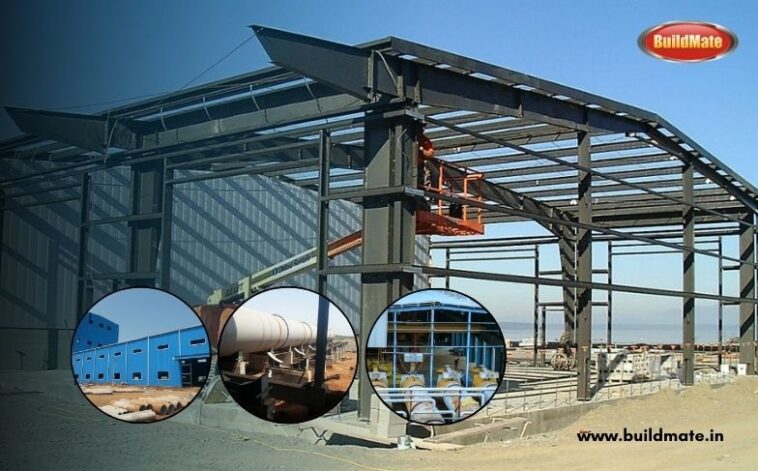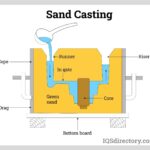Pre-Engineered Buildings (PEBs) have become popular in India due to their efficiency, durability, and cost-effectiveness. PEBs are structures designed and manufactured off-site using pre-fabricated steel components. This method is particularly useful for projects requiring quick installation and high flexibility, including warehouses, factories, commercial complexes, and more.
1. Understanding Client Requirements
The construction process begins with understanding the client’s needs. Indian PEB manufacturers often conduct initial consultations to gather information about the project. During this phase, key details are discussed, including:
-
Purpose of the building (e.g., warehouse, industrial plant, commercial space)
-
Building dimensions (height, length, and width)
-
Location and environmental considerations (wind speed, seismic zones, etc.)
-
Special features (doors, windows, insulation, lighting, etc.)
-
Timeline and budget
A clear understanding of these factors helps manufacturers create a customized design that aligns with the client’s expectations.
2. Design and Engineering
Once the requirements are understood, the design and engineering phase begins. This step is crucial, as it ensures the building will be both functional and durable. Indian PEB manufacturers use advanced software like AutoCAD and STAAD to create 3D models and analyze the building’s structure for strength and stability. Some important considerations during this stage include:
-
Structural Load Analysis: Engineers assess loads the structure will bear, including dead loads (weight of materials), live loads (occupants or equipment), and environmental loads (wind, seismic activity).
-
Material Selection: Steel is typically chosen due to its strength, flexibility, and resistance to corrosion. Manufacturers determine the grade of steel and any coatings required for additional durability.
-
Design Customization: Every client has unique needs. For example, a warehouse may require large open spaces without columns, while a commercial space may need more internal divisions. Indian manufacturers tailor designs to meet these specific requirements.
-
Approval of Designs: After completing the preliminary design, manufacturers present it to the client for approval. Changes and adjustments can be made at this stage to ensure alignment with the client’s vision.
3. Fabrication of Components
Once the design is finalized, the fabrication process begins. The building components are manufactured off-site at specialized factories, which helps save time and control quality. In this phase, manufacturers focus on:
-
Cutting and Shaping Steel: Steel sections are cut, shaped, and welded according to the design specifications. Indian pre engineered steel building manufacturers use CNC (Computer Numerical Control) machines for precise cutting and drilling, ensuring accuracy and minimizing waste.
-
Corrosion Protection: To enhance durability, steel components are treated with coatings to prevent rust and corrosion. This is especially important for structures located in humid or coastal regions of India.
4. Transportation to the Site
After the components are fabricated and inspected, they are transported to the construction site. Indian PEB structure manufacturers organize logistics to ensure timely delivery of materials, carefully packing and securing components to prevent damage during transport. Transportation requires planning, especially if the site is in a remote location. Manufacturers ensure that all parts reach the site safely and according to the project timeline, avoiding delays.
5. Site Preparation
Site preparation is a vital step that sets the foundation for the PEB. Before assembly can begin, manufacturers must ensure the construction site is ready. This phase includes:
-
Foundation Work: The type and size of the foundation depend on the building’s weight and soil conditions. Foundations are built according to precise engineering calculations to support the entire structure.
-
Site Clearance: The site is cleared of obstacles, and the ground is leveled to facilitate smooth installation.
-
Utilities and Access Points: If needed, manufacturers coordinate with contractors to install access points for water, electricity, and other utilities, which will be essential during assembly.
6. Assembly and Erection
Once the site is ready, assembly begins. This is one of the most critical stages in the PEB construction process, as it involves putting all prefabricated components together. Key steps during assembly include:
-
Column Erection: The columns, which provide the building’s vertical support, are erected first. They are securely anchored to the foundation to ensure stability.
-
Rafter Installation: Rafters, which form the building’s framework, are then installed atop the columns. They provide support for the roof and distribute the building’s weight.
-
Roof and Wall Panels: Once the main framework is in place, roof and wall panels are attached. These panels are usually insulated to improve energy efficiency, particularly in hot or cold climates.
-
Bracing: To enhance structural stability, bracing is added in critical areas. This helps the building withstand lateral forces, such as wind or seismic activity.
-
Doors, Windows, and Finishing Touches: Lastly, doors, windows, and other specified fixtures are installed. The building is inspected to ensure everything is securely attached and meets quality standards.
7. Quality Assurance and Final Inspection
After the assembly is complete, a thorough inspection is conducted to ensure the building meets all safety and quality standards. PEB manufacturers in India adhere to specific guidelines to ensure the building’s stability, durability, and performance. Some aspects checked during this inspection include:
-
Structural Integrity: Verifying that all connections, bolts, and fasteners are secure.
-
Alignment and Leveling: Ensuring that the building’s framework is properly aligned and leveled.
-
Safety Checks: Ensuring the building is compliant with local safety codes and regulations.
After passing all quality checks, the project is considered complete. Clients are provided with documentation on the building’s maintenance needs and tips to extend its lifespan.
8. Handover and After-Sales Support
The final step in the process is the handover. The manufacturer provides the client with all relevant documents, including design plans, maintenance guidelines, and warranties. Many PEB manufacturers in India offer after-sales support to address any questions or concerns that arise after project completion. This support can include maintenance services, repairs, or additional modifications to the structure if needed.
Conclusion
In conclusion, as a leading PEB manufacturer in India, Buildmate offers high-quality, customized pre-engineered building solutions to meet diverse industry needs. With a focus on innovation, efficiency, and durability, Buildmate ensures each project aligns with rigorous standards and client expectations. For reliable, cost-effective, and advanced PEB structures, Buildmate is the trusted choice across India.
This post was created with our nice and easy submission form. Create your post!





